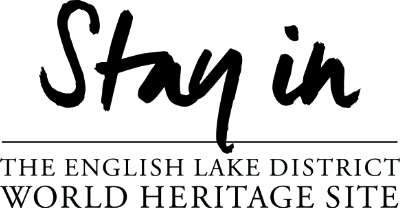Human history in Little Langdale stretches back thousands of years, probably as far back as the Neolithic times when people crossed over the Wrynose and Hardknott passes for trade. Once you start looking for it, the evidence of this history is everywhere; in the circles of hill forts, disused mine workings, ancient meeting places and the very paths and roads you walk on.
This low-level route takes you on a tour of some of the valley's historical features and, even if you’re not into that kind of thing, it’s a pretty walk nonetheless. Although it’s mainly on good tracks the path along the flank of Lingmoor undulates quite steeply and can be wet. As always decent footwear is required.
From the Three Shires Inn to Fell Foot
To get started turn right (with the inn behind you) and head up the road passing the telephone box. Follow the road for a short distance until you reach a lane on the right with a blue sign saying ‘unsuitable for motor vehicles’. Follow this past Dale End farm where it turns into a gravel track.

You’ll soon see a path leading up to a gate to the left. Follow this and go through the gate and continue following the good path beyond as it makes its way up the fellside. At a wall and gate the main path starts to zig-zag uphill. Rather than following the path uphill take a path next to the wall on the left.

This path continues alongside the wall below scree slopes with pleasant views into Little Langdale and across Little Langdale Tarn. Keep on the path until it eventually emerges onto the road. Go downhill and turn right to follow the road towards Fell Foot farm.
As you walk down the road you will see an elevated lump of ground overlooking the farm. This is Castle Howe, thought to be the site of a hill fort from the Iron Age or possibly earlier. As Great Langdale was home to a number of stone axe factories, it is thought the route via Wrynose Pass out to the coast was important for trade.
If you continue walking up the lane you will come across a fairly unremarkable mound just next to Fell Foot farm. However, this mound - variously named the Thing Mound, Ting Mound or Ting Moot - is the remnants of a Viking meeting place. If you look carefully you’ll see it has a number of terraces constructed around it.
When the Romans came to Cumbria they built a road to the coast over the Wrynose and Hardknott passes, which connected the Galava Roman fort at Ambleside with the Mediobogdum fort at Hardknott. When the Vikings came to Britain this was a well established thoroughfare and so a natural place to locate a meeting point to discuss local government and any other issues.
Fell Foot to the Greenburn mines
To continue the walk, retrace your steps for a short distance down the road until you see a gate and signpost to Tilberthwaite. Cross a small bridge to go through the gate and follow a track across a field that then heads uphill. This meets another track heading up the valley into Greenburn.
Follow this to a gate and then continue heading up the valley until you reach the old mine workings in Greenburn. Mining is thought to have begun here in the late 1600s, reached a peak in the mid-19th century and eventually ended in 1940. You can still see the remains of the buildings where the copper ore was processed, the miners’ accommodation, storage sheds, and spoil heaps, as well as the site of a waterwheel and the remains of a tramway. The mine shafts and levels themselves are blocked up now, but their entrances can be identified by the mounds of spoil on the hillside below them.

After spending some time investigating the mines (it is easy to end up spending hours here) retrace your steps down the path out of Greenburn. You’ll pass the track back down to Fell Foot, but keep on going until the path splits, with one strand heading steeply uphill (signposted to Tilberthwaite). Ignore this and continue heading downhill to the collection of buildings at Low Hall Garth.
The path drops down through the buildings and swings around below slag heaps. Here you’ll see a gate on the left leading to Slater’s Bridge. The 17th century bridge is thought to have been built by workers at the various mines nearby. Built from slate and incorporating a boulder in the River Brathay it’s so wonderfully uneven and worn it almost seems to be a natural part of the landscape itself.
After the bridge head slightly right uphill and then through a couple of gates and a field until you reach the lane heading back up towards the Three Shires Inn.
Posted:
Category:
Walking, Lake District, Three Shires Inn
Author: Nina


